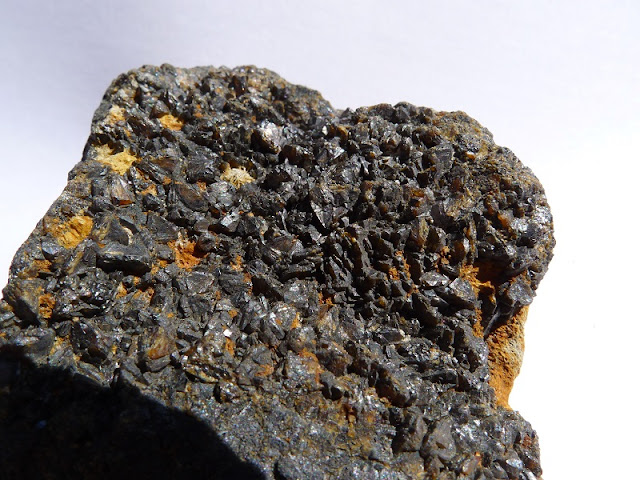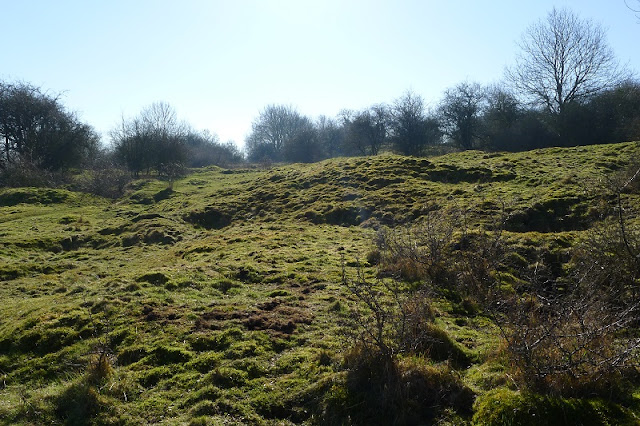Situated close to Sheldon, the best approach is via the B5055 either from the west A515 (Buxton to Ashbourne) via Monyash or from Bakewell to the east. There are a few places to park on the verge by the entrance to Magpie Mine with both Mines within easy walking distance.
Magpie mine is a tourist attraction and is run by the PDMHS (Peak District Mines Historical Society). Having only closed as recently as 1958 its one of the best preserved lead mines in Derbyshire.
Background
Magpie mine has a long history and records show it dating back to about 1740 where it was one of many mines located in the same area. It had a somewhat checkered history of opening and closing over the years, often due to issues with water and flooding. There was a successful and profitable operation between the years of 1813 and 1820 following many years of exploratory work to find new ore veins. This then tailed off due to issues with water and their inability to drain it. 1824 saw a new pump engine installed and over 800 tons of lead were mined in 1827 but water caused problems again by 1830 with the mine closing again in 1835 with investors refusing further funding.
During the period of 1824 to 1835 many legal disputes resulted between competing mine owners operating separate shafts in the same location brought on by Magpie breaking into veins currently being worked by others. Many legal battles finally culminated in episodes of violence and eventually death when in 1833 three Redsoil miners were killed and others injured as a result of tar and straw fires lit by Magpie miners underground in an attempt to drive out the opposing miners. A 'Widows' curse is said to have come into affect following the subsequent acquittal of the Magpie miners on charges of murder.
1839 saw the mine reopened and with the help of Cornish miners the mining system improved and expanded and the introduction of a larger Pump engine. This allowed a new shaft to be sunk to 684 feet in depth but this quickly flooded as it was beyond the capability of the installed pump to drain. The mine again closed following lack of people willing to invest any further.
It was reworked again from 1868 following the installation of a larger pump and then construction on the Magpie Sough undertaken in 1873 and completed in 1881. Mining continued but became increasingly more difficult facing geological difficulties as well as falling ore prices resulting in the mine again closing by 1883. The construction of the sough was said to have cost upwards of £18000 which was a considerable sum in those days!
The mine continued to operate on a small scale over the years following 1886 with True Blue mine being incorporated into a new company in 1913. Much money was poured into it over the following years with little return until it again closed in 1924.
The mine was subsequently reopened in 1951 and a new winder and steel headgear installed. The mine was pumped dry but no sizeable ore body found, resulting in the mine finally closing for the last time in 1958.
 |
| TRUE BLUE MINE - CAPPED SHAFT AND GIN CIRCLE |
 |
| NEARBY POND ON SITE OF MINE BUT AGRICULTURAL IN ORIGIN |
 |
| GREAT VIEW OF MAGPIE MINE FROM TRUE BLUE MINE |
 |
| ENTRANCE TRACK TO MAGPIE MINE |
 |
| AGENT'S HOUSE WITH MINE BEHIND |
 |
| CLICK TO ENLARGE |
 |
| CLICK TO ENLARGE |
 |
| THE SQUARE CHIMNEY |
 |
| BOLE SHAFT - FROM 1789 |
 |
| SHUTTLEBARK ENGINE SHAFT - FROM 1760 |
 |
| WINDING DRUM ON WINDING HOUSE - FROM 1869 |
 |
| CORNISH ENGINE HOUSE - FROM 1869 |
 |
| STEEL HEADGEAR AND CAGE - FROM 1950's |
 |
| CAGE OVER MAIN SHAFT |
 |
| SPOIL HEAPS |
 |
| REPLICA HORSE GIN |
Mineralogy
Mindat lists the following minerals from Magpie Mine:
Calcite
Cerussite
Chalcopyrite
Cinnabar
Galena
Pyrite
Quartz
Zinc Blende
I have found no listings for True Blue Mine
Minerals found
The only site searched and specimens found was True Blue Mine:
Galena
Fluorspar
Baryte
Calcite
Gypsum * See note under photo
 |
| GALENA IN BARYTE |
 |
| FLUORSPAR |
 |
| BARYTE |
 |
| CALCITE |
 |
| THIS GYPSUM SPECIMEN WAS FOUND IN A RUBBLE HEAP ALONGSIDE THE MINE - UNSURE WHETHER THIS ORIGINATED FROM THE MINE OR NOT - IT WAS NOT THE ONLY PIECE |
Some useful references
Historic England entry for Magpie Mine
Mindat entry for Magpie Mine
PDMHS entry for Magpie Mine
Historic England entry for True Blue nucleated lead mine

































